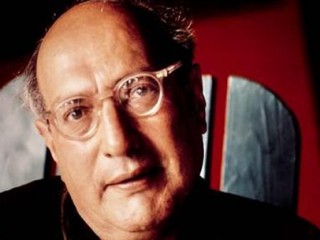
Mark Rothko biography
Date of birth : 1903-09-25
Date of death : 1970-02-25
Birthplace : Gvinsk, Russia
Nationality : Russian-American
Category : Arts and Entertainment
Last modified : 2011-10-19
Credited as : painter, abstract expressionists,
The American painter Mark Rothko was one of the original abstract expressionists who emerged in New York after World War II. His mature painting emphasized pure color.
Mark Rothko was born on Sept. 25, 1903, in Gvinsk, Russia, and emigrated to the United States in 1913. He attended Yale University (1921-1923), and he began painting in 1925, when he studied with Max Weber at the Art Students League in New York. He later traveled extensively in Europe.
In 1935 Rothko cofounded "The Ten," an organization of expressionist artists in New York. During 1936 and 1937 he worked on the government's Federal Arts Project. In 1948 he joined Robert Motherwell, Barnett Newman, and William Baziotes in founding a New York art school called "Subjects of the Artist." For extensive periods throughout his career Rothko taught at colleges and universities, including the Center Academy in Brooklyn (1929-1952), the California School of Fine Arts in San Francisco (summers of 1947 and 1949), Brooklyn College (1951-1954), the University of Colorado (1955), and Tulane University (1956).
Rothko's first important one-man show in 1945 at the Art of This Century Gallery in New York City established him as a leading figure in postwar American painting. During the 1940s and 1950s he exhibited regularly. In 1958 his work was included in the Venice Biennale, and in 1961 the Museum of Modern Art in New York City held a retrospective exhibition. Among Rothko's special awards were his election to the National Institute of Arts and Letters in 1968 and the honorary degree of doctor of fine arts from Yale University in 1969. Rothko committed suicide in New York on Feb. 25, 1970.
Like nearly all the advanced American painters who matured during the 1940s, Rothko's early work was founded on the tenets of both cubism and surrealism. This meant that his art leaned both toward the problems of formal abstraction and toward a more traditional notion of conceptualized subject matter. By the late 1940s, however, he gradually broke through to a style that rejected both cubism and surrealism, and his work became linked with the abstract expressionism of men like Jackson Pollock and Willem de Kooning. Rothko's bestknown paintings of the 1950s and 1960s continued to be associated with this general style.
But Rothko's art reveals a distinct and personal interpretation of the abstract expressionist style. From his first emergence as a mature artist, he eschewed the gestural brushwork and the dense, painterly surfaces that became celebrated in the work of De Kooning, Franz Kline, and others. Instead, Rothko concentrated on expression through color alone, and to this end he radically simplified his imagery. In his best paintings, the imagery consists of two or three rectangles of color that float within an abstract space. Generally, the areas of color dissolve softly into one another, denying all traces of either hard or tactile edges. The softness is a function of the artist's delicate, feathery brushstrokes, and it results in an expanding pictorial space that seems to consist of pure color rather than colored objects. In many of Rothko's paintings his colors appear to generate their own magical or divine light.
















